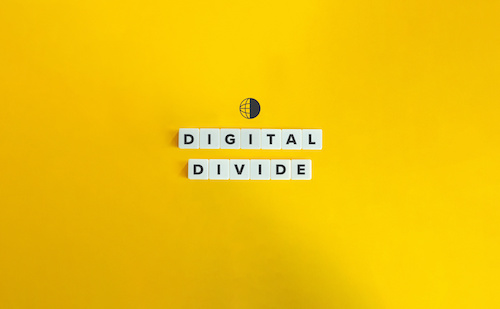Key points:
- The digital divide is growing wider, exacerbated by unequal access
- Edtech software can bridge the divide by ensuring students have equal access to resources and support
- See related article: 4 ways school leaders can target the homework gap
The COVID-19 pandemic has brought to the forefront the stark reality of inequities in our education system. As schools shifted to remote learning, a digital divide emerged, leaving countless students on the wrong side of the equation. The unequal access to technology and the internet has widened the gap, hindering the academic progress of many young minds. However, in the face of this challenge, lies an opportunity to foster equitable learning through thoughtful implementation of software solutions.
Before the pandemic, the digital divide was already a concern, with disadvantaged students lacking access to essential learning resources. However, as classrooms transitioned online, the divide became larger and larger, exposing the vulnerability of marginalized communities. As a former educator, I have witnessed this divide and know firsthand how limited access to devices, high-speed internet, and adequate tech support create barriers to learning, perpetuating a cycle of disadvantage and hindering students’ potential.
Thoughtful implementation of software in education can be a game-changer, paving the way for equitable learning opportunities for all. By harnessing the potential of technology, we can bridge the educational divide and create an inclusive and equitable learning environment where every student has access to high-quality education and resources.
Classroom management software plays a crucial role in promoting equitable learning opportunities for all students. The power of technology is that it empowers educators to create inclusive and personalized learning environments that address the divide.
Today’s flexible solutions allow educators to seamlessly adapt to diverse learning styles and abilities, ensuring that no student is left behind. Teachers are also able to use these tools to better accommodate learners with disabilities and learning challenges, fostering a supportive and nurturing educational experience. Through real-time monitoring and data-driven interventions, educators can identify struggling students and provide timely support, bridging learning gaps and promoting academic success.
By prioritizing students’ physical and mental well-being, education systems can implement innovative software that tracks the well-being of students. This will contribute to a comprehensive approach to education, ensuring that every learner’s emotional needs are addressed. Through comprehensive features, technology will empower educators to identify students who may require additional support, bridging the gap between academic success and emotional well-being. By fostering a supportive and nurturing atmosphere, technology enables students to thrive academically and emotionally, regardless of their background or circumstances. Embracing these systems in educational institutions will help create an inclusive and caring learning environment, where students feel valued, understood, and empowered to reach their full potential.
With the ever-increasing demand for remote and hybrid learning models, edtech software can bridge the digital divide by ensuring that students have equal access to educational resources and support, regardless of their geographical location. This software enables seamless and secure remote connections to school networks, allowing students to participate in virtual classrooms and access educational materials from anywhere. Facilitating remote learning enables those facing geographical constraints or other challenges to remain actively engaged in their educational journey.
Embracing this software empowers educational institutions to offer inclusive and equitable learning experiences, where every student can participate, learn, and succeed, irrespective of their physical location or circumstances. These solutions are helpful tools in creating an inclusive educational landscape. Such technologies offer innovative features and functionalities that empower educators to tailor learning experiences, foster student engagement, and provide crucial support to those facing learning challenges.
Equitable learning is not a distant dream; it is a vision we can achieve with intentional efforts and strategic implementation of technology. By embracing thoughtful software solutions, we can bridge the digital divide and create a future where every child, regardless of their circumstances, has equal access to quality education.
Related:
ISTELive, Abbott Elementary, and a push for Black educator representation
How I foster an inclusive classroom as a new teacher
What is the digital divide?
- 4 ways to encourage play in education - April 25, 2024
- CoSN IT Leader Spotlight: Lisa Higgins - April 25, 2024
- It’s time to pay student teachers - April 25, 2024

